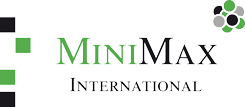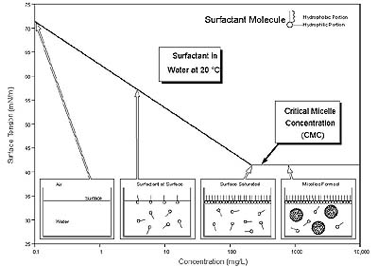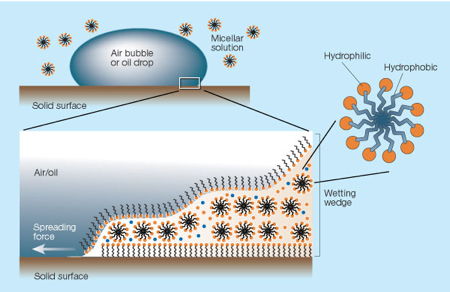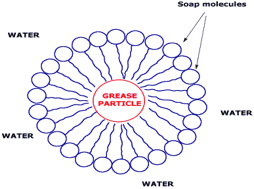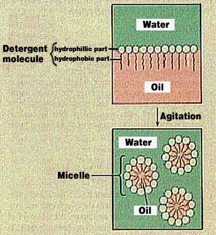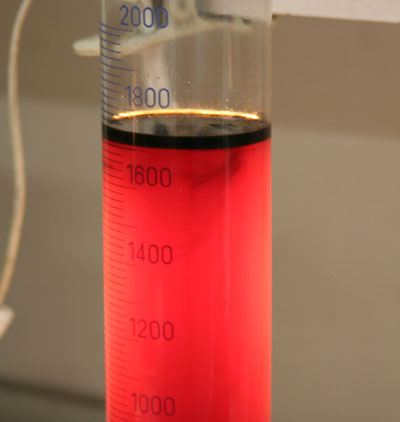A surface which is contaminated with oil can easily be cleansed with R-2 NG or R-3 NG.
This cleaning is a 3 step operation:
- Wetting of the surface.
- Emulsifying the oil into the cleaning emulsion
After the cleaning the oil will demulsify in the buffer tank.
The separated phases can easily be removed.
The cleaning solution can be released safely into the sea.
Making the cleaning solution
Figure1:
The concentration of the cleaning solution must be high enough to obtain a solution which has formed micelles (little spheres). In the picture these are the last stages at the point where the curve becomes flat. At this stage the cleaning solution has reached it maximum wetting range. The lower it becomes the better it will wet and clean the surface.
The wetting stage is the stage where the cleaning solution wets the surface and detaches the oil droplet from the surface
Figure 2:
After the oil droplet is detached it will be emulsified into the cleaning solution.
The oil droplet is catched into the sphere of the micelles. Without the micelles the oil droplet can not be solubilised into the water. The hydrophobic (fat loving) part of the surfactant sticks into the oil droplet and the hydrophilic (water loving) part of the surfactant faces to the main phase water:
Figure 3:
The grease (Oil) is emulsified into the cleaning solution:
Figure 4:
The cleaning solution has cleansed the surface and can be transported to the buffer tank where
the oil and water can demulsify.
Figure 5:
